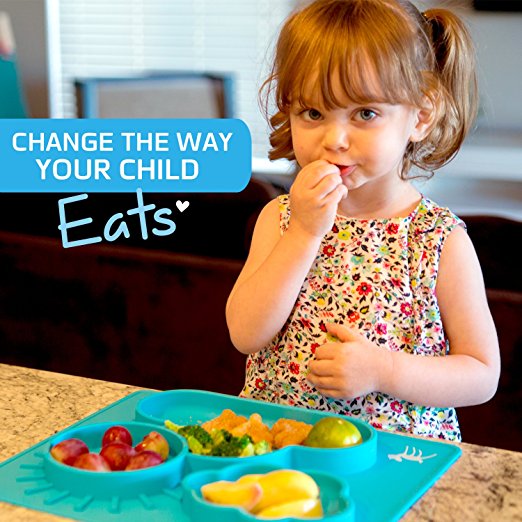 When is Your Child Ready to Learn to Self-Feed?
When is Your Child Ready to Learn to Self-Feed?
As soon as your baby can sit up on their own, they are ready to learn how to self-feed. Sitting in a high chair or the floor takes newly built strength and gross motor skills. In order to self-feed, your child must be able to do this confidently, consistently, and comfortably, usually around 8 to 12 months of age.((https://www.parents.com/toddlers-preschoolers/development/growth/when-do-toddlers-start-self-feeding/))
Other signs that your child is ready for self-feeding is they will reach for the spoon when you are feeding them. Your child will extend their hands towards food on your plate. His/her eyes will track your movements as you feed him/her. Follow his/her readiness cues.
It may seem like your baby is playing and exploring with food more than consuming, but this is an important phase in the development of self-feeding.
Remember, don’t force your baby to start eating solid food. Let your baby lead the way.
Breastfeeding and Self-Feeding
When your baby begins to self-feed, you should continue breastfeeding if you are able. Breastmilk is still beneficial to children in later infancy and toddlerhood. In fact, the Amerian Academy of Pediatrics recommends breastfeeding continues for at least one year. The World Health Organization advocates mothers breastfeed for two years o more.((https://www.cdc.gov/breastfeeding/faq/))
You may notice as the older infant/ toddler breastfeed, they will play more of an active role as they learn to self-feed solid food. They may lift up your shirt, position your breast, and use verbal communication to indicate when they want breast milk.
Baby Self-Feeding Creates Autonomy
Learning to self-feed creates autonomy and independence. According to Dr. Jaeah Chung, M.D., of Stony Brook Children’s Hospital, “A child being able to feed himself is an important aspect to his personal and social development.”((https://www.parents.com/toddlers-preschoolers/development/growth/when-do-toddlers-start-self-feeding/)) Self-feeding helps children cue into their own body’s needs about hunger and satisfaction.
In fact, researchers have found that teaching children to self-feed with whole foods “may develop healthier eating habits and be less likely to become overweight”.((http://healthland.time.com/2012/02/10/skip-the-strained-peas-let-babies-feed-themselves/))
Researchers recommend skipping pureed spoon feeding and jumping straight to solids.
Baby Self-Feeding Facilitates Fine Motor Skills
Most children begin self-feeding by pinching the finger and thumb. This action is important in developing fine motor skills and hand strength that will later be used in handwriting, cutting, keyboarding, tying laces, etc. Andrea Stanley explains on Parents.com:
It can be a real giggle session watching your small fry learn to maneuver his way around a dinner plate, but every time he smashes bananas all over his face or spoons his favorite nibbles into his mouth, he’s actually cementing muscle strength and coordination into his memory.((https://www.parents.com/toddlers-preschoolers/development/growth/when-do-toddlers-start-self-feeding/))
Letting your child play with their food is actually a good thing! It may be messy, but it’s a learning process important to development.
Baby Self-Feeding Gives Parents a Break
The first time you feed your baby solid food is definitely a milestone. Parents are patient with each bite capturing the moment with videos and photos. As busy schedules and life continue, many mothers and dads can’t wait for the child to be more autonomous with their feeding.
Of course, a self-feeding child needs to be closely observed for signs of choking. Parents should familiarize themselves with first aid methods for choking.
What to Feed Babies and Toddlers
Obviously, when teaching your child to self-feed avoid chokeable foods like grapes. Small soft items, liked cooked vegetables, are a great place to start. Avoid common allergens like strawberries until after one year of age.
Here’s a list of great first foods to teach your baby to self-feed. Remember to cut food up small.
- Cooked carrots
- Avocado
- Pasta
- Mashed potatoes
- Peas
- Banana
As your child’s self-feeding skills develop and palate expands, you can start feeding the same foods you are eating as long as they are healthy, organic, whole foods.
Products that Support Baby Self-Feeding (and Less Mess!): Osho Non-Slip Silicone Placemat
We were sent a great product from Osho. This Non-Slip Placemat for Babies, Toddlers, and Kids is made 100% food-grade silicone. It is safe to use in the dishwasher and microwave.
tookapic / Pixabay


Leave a Reply